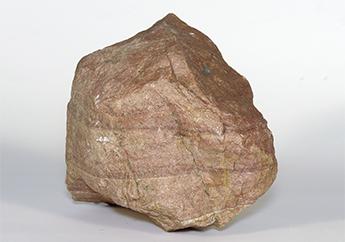Missouri Geological Survey Director: Carey Bridges, RG
Taking their names from the Latin word errare, erratics are rocks that differ from size and type of rock native to their surroundings. During the ice age, glaciers carried rocks and soil into Missouri from South Dakota, Iowa, Minnesota, Wisconsin, Michigan and Canada.

When the glaciers melted, the rocks and soil remained in deposits of till that is sometimes more than 300 feet thick. The rocks are usually composed of igneous and metamorphic rock types most resistant to weathering. While the erratics were trapped within glacial ice, they were rubbed against each other, as well as the bedrock they moved over during their journey south. Erratics may be found with flattened sides and grooves etched into them as a result of this abrasion.
Quartzite and gneiss (rhymes with nice) are the most common glacial erratics in Missouri. Much of the quartzite found in Missouri is believed to have originated in South Dakota and is known as Sioux Quartzite. It is commonly red to purple and is metamorphosed sandstone, composed primarily of the mineral quartz. It is generally gray or pink, has a banded appearance, and is made up of granular mineral grains, typically containing abundant quartz or feldspar minerals. Erratics composed of anorthosite, andesite, basalt, diorite, gabbro, granite, granodiorite, greenstone, schist, slate and syenite may also be found.
The size of erratics can range in size to that of pebble-size particles to boulders the size of cars. Occasionally very interesting pieces are discovered, such as native copper from Michigan or banded iron formations from Minnesota. One glacial erratic composed of granite and located in Sullivan County, is estimated to weigh more than 750,000 pounds!
Visit the department’s Ed Clark Museum of Missouri Geology, where you will find quartzite on display.
Nothing in this document may be used to implement any enforcement action or levy any penalty unless promulgated by rule under chapter 536 or authorized by statute.
For more information
Geological Survey Program
Missouri Geological Survey
P.O. Box 250
Rolla, MO 65402-0250
United States
